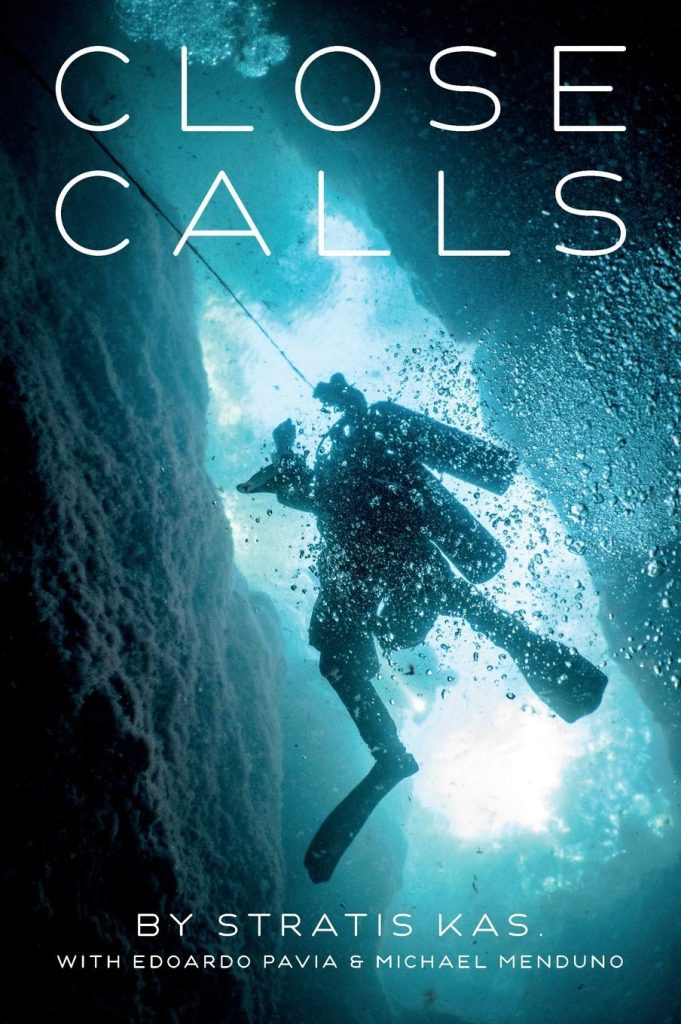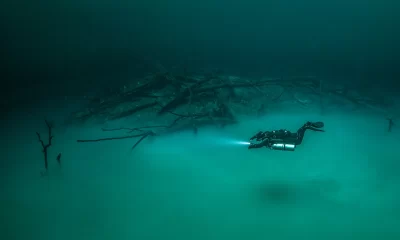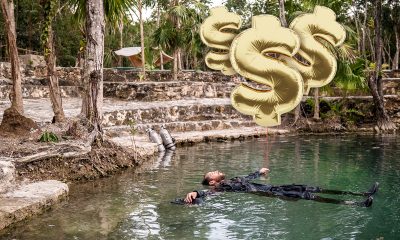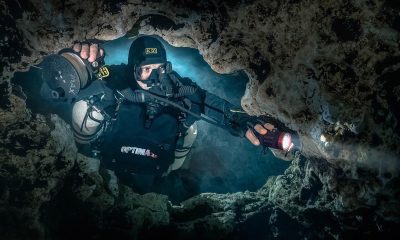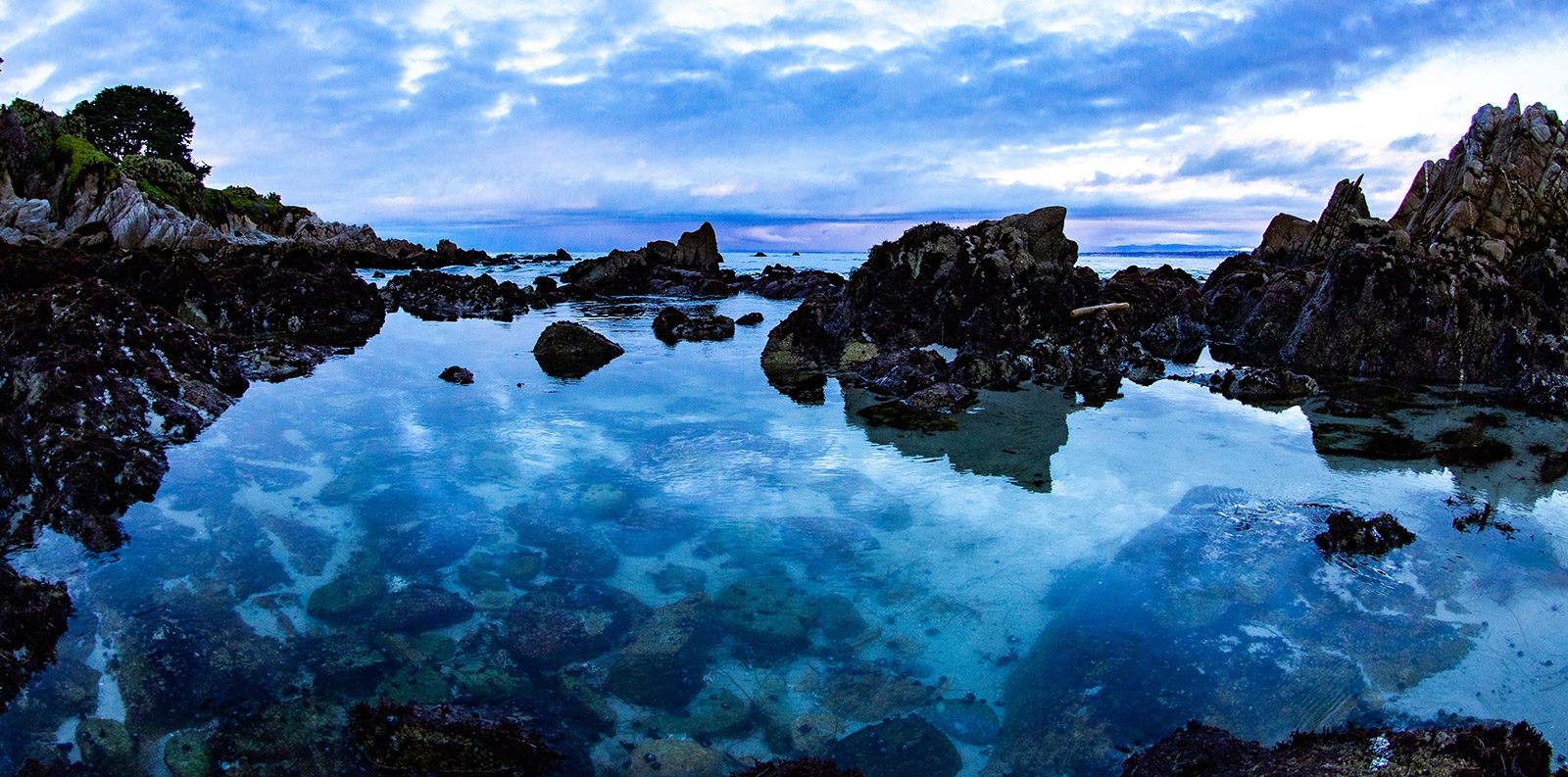
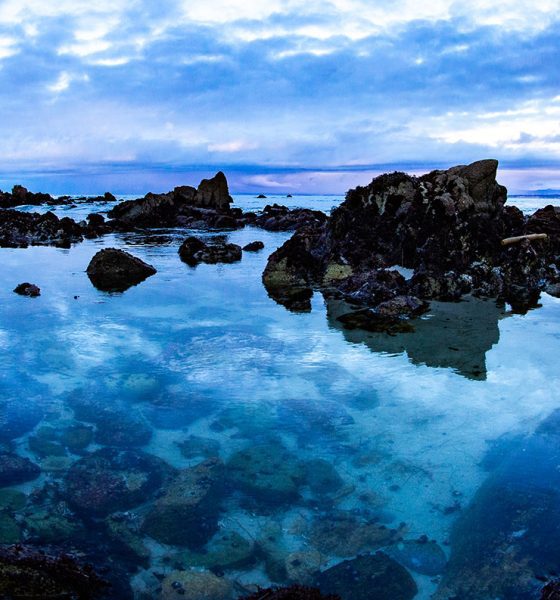
Diving Safety
Close Calls: Never Underestimate the Power of the Ocean.
Jonathan Dekhtiar, an experienced recreational diver, who recently went tech, recounts a close call on what ended up being a solo night dive at an unfamiliar surgy cove, when his dive buddy decided to pass on the dive. What could go wrong?
By Jonathan Dekhtiar. Header image courtesy of Valerie Saidman.
This “close-call” happened recently—around April 2022—and I believe it conveys a perspective not discussed enough in dive training in general. I’m talking about environmental dangers. Most of us know they are a risk and, for many of us, that reality dwells in the back of our minds. But, we don’t always pay attention to them unless they become a clear and present danger.
Environmental risks pose a unique challenge to divers, and indeed, most of these dangers easily fall into the category of “unknown unknowns.” And, it’s difficult to know about the risk of a specific environment if you’ve not experienced diving in that environment before. Let’s take a simple example. Just because you have significant experience shore diving in Northern California, it doesn’t necessarily mean that your knowledge and experience will translate to shore diving in Bonaire. Will it be helpful? Most likely. And one could argue that these situations are still fairly close, but what about the diver who attempts shore diving for the first time after thousands of boat dives? I hope it’s common sense that adventuring yourself in a new dive site without local knowledge might lead you into some unforeseen and unexpected perils. In this report, we will explore what might happen if the data you collected prior to the dive is insufficient.
In a way, this misadventure can be defined as an “environmental danger”—unlike technical problems, many of which can be mitigated by proper equipment care, proper training, an effective equipment configuration, staying sharp on your skills, discussing some potential friction points on the surface like gas switch procedure or cave navigation procedures, and making sure the whole team aligns before the dive. On the other hand, environmental dangers are “fuzzier” and are prone to misevaluation because either you have misread the environment or you are overconfident in your abilities.
A Little Background
Before getting into the details of my recent learning experience, I will start with a little bit of personal background. I have been a certified diver for close to 15 years. I started my technical diving career in 2020 with TDI (cave, stage cave, deco procedures), and I will be taking GUE Tech 1 in a few months. I lived in Northern California for about three years, close to Monterey, with probably more than 200 local shore dives completed. I can honestly say I feel comfortable diving in the area at any dive spot. I don’t believe I am capable of absolutely anything, but I would be lying if I said I wasn’t appreciably more experienced than the average recreational diver heading to Monterey every weekend.
After the dive in question, I had planned to sell my pickup truck and leave California, so it would be one of my last opportunities to dive in the area for a long time, especially given the upcoming weeks’ weather forecast (which didn’t look good). I am perhaps not blameless for committing to the objective in spite of weather conditions, but I’m pretty sure that some of you are also guilty of squeezing in a last dive before leaving a place you love, or pushing yourself to see that wreck, tunnel, or cave on your bucket list. I would be dishonest if I said that it was possible to make a total abstraction of “our objective of the day.” However, sometimes stories like the one I’m about to tell you are a reminder that the most important objective is to be able to do the next dive. That means we must try our very best to judge the other aspects of the dive fairly and not focus solely on the objective of the dive.
At that time, I knew the weather would deteriorate over the evening. Consequently, what that meant was that we needed to be efficient on the surface. In other words, we had to hurry if we didn’t want the weather to turn south on us. I will mention that rushing is never a good thing, though what I meant here by “efficient” was something along the lines of not losing hours in pre-dive discussions, as I’m accustomed to doing.
Earlier that day, a few friends and I were making a few dives all around the bay, and they all reported that there was a strong surge, but nothing truly out of the ordinary or dangerous. Unfortunately, however, my dive partner of the day let me know that she wanted to pass on that dive. She was still cold from her previous dive that day and didn’t want to get back in the water for a night dive. While I would have preferred to dive with a teammate, I unfortunately find myself solo diving fairly often, most of the time because finding a teammate is not always easy, and its even harder to find someone willing to be a good teammate and work as a team. [Ed. note: GUE does not condone solo diving] So all things considered, it wasn’t at all a red flag in my mind.
Taking The Plunge
In checking the water, the conditions seemed decent—a bit agitated but totally manageable. I set my gear up, kitted up, got in the water, and had a wonderful 45-minute dive with a max depth of 12 m/40 ft on double LP85s (clearly, available gas was not going to be an issue). I didn’t want to push the limits; I had my nice dive, I was happy to have been able to enjoy this breathtaking place one more time, so I thought it was time to call the dive. So where is the drama you will ask? Oh yee of little faith! You really thought that heading back to the shore would be that easy?
This was a solo night dive at a site I had dived only once before when conditions were surgy. So, nothing totally crazy, but far from perfect. When I began my underwater swim back to shore, I rapidly realized that something was wrong, I was getting in shallow waters way too fast. I thought that maybe I was passing by a reef, as we often see in Northern California, which can make the depth shallower by 3-6m/10-20 ft. But it kept getting shallower. At one point, I decided that it would be safer to ascend in order to orient myself; however, once I broke the surface, my surroundings were completely black, and I had no idea whether I came from the left, the center, or the right. I was able to distinguish that I was very close to the shore, so I decided to swim ahead of me to the shore line and most likely would have to walk back to my truck.
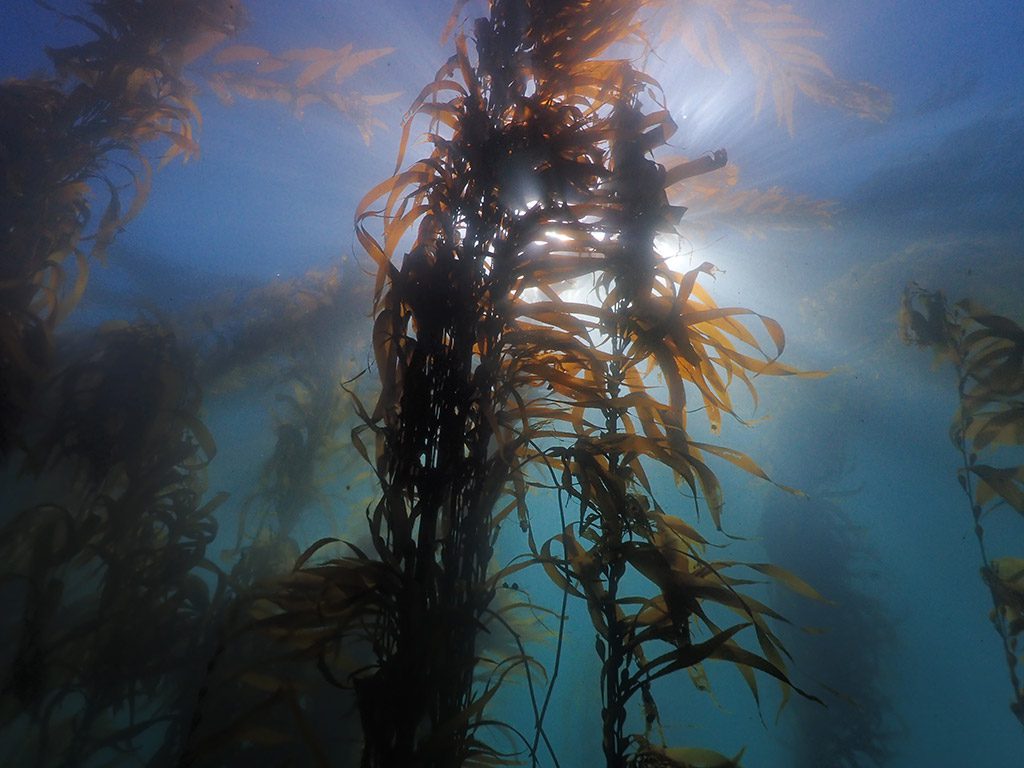
Unfortunately, with the surroundings so dark, I was not able to determine that many large rocks were right ahead of me. In addition, the so-called “shore” in front of me was basically the bottom of a cliff. By the time I realized where I was, it was too late. The waves and current were way too strong to fight them. Waves were crashing me into large rocks, and I was genuinely frightened that one wave would hurdle me onto a rock head first, and that I would lose consciousness and drown. To add to the stress, the waves tended to add an incredible amount of air bubbles in the water, giving me zero chance to see anything even if it had been right in front of my face. Spoiler alert: zero viz cave training is not useful for these situations.
In this kind of situation, the one thing that I believed would keep me alive was TO KEEP MENTAL CONTROL at all costs. Panic was not an option. My strategy was very simple—taking problems one by one, from the most imminent danger to the least concerning, and addressing them the best I could. If there was anything that saved me that day, it was this instinctive reaction to be methodical and to not give panic a chance to take hold in my psyche. Looking back on that moment, it reminds me of an accident story reported by Mike Young at the Blue Hole near Santa Rosa, New Mexico, where Shane Thompson, his dive partner, tragically passed away. Mike said, “I’m not gonna do anything, I’m not making a single move unless there’s a purpose.” This phrase now resonates with me more than ever before. I really believe that this attitude was able to get me out of trouble.
My first reaction was to dump my wing and drysuit in a desperate attempt to regain depth; since waves are stronger on the surface, deeper is safer. I simultaneously turned 180 degrees “feet first” in the direction of the rocks. First, in an attempt to swim away, but primarily to provide a shield for my head; if one part of my body had to crash on these rocks I chose my legs over my head. I finally managed to grab one of the rocks, which allowed me to “pull and glide” (not much of a glide, to be honest) myself out of the danger zone. After maybe one or two minutes that felt like an eternity, I finally managed to get out of that zone and reach the rocky shore. The waves literally washed me on the 1 m/3 ft large rocks all over the beach, which allowed me to finally hold onto something stable and take a breath.
Beached and Breathing
Having a heavy cold-water configuration in steel doubles, standing back up was a real struggle. Once I was able to finally stand up and look around me, I realized that I had managed to get myself onto one of these rocky beaches where there was no walking access (e.g. stairs) in or out and that getting out of that place would probably be complicated to say the least. Without any urgency anymore, I found a rock to sit on and evaluate my options: I couldn’t walk along the shore to get back to where the dive started. I was balancing abandoning my gear, trying to find a way out by foot, and coming back later for it, or trying to carry my gear on my back a little, which could be useful in case I had to swim to connect two beaches (which to be fair, was not really an option in my mind. I would have probably slept on a rock to avoid getting back in the water). By chance, I managed to find a way to hike my way out by hopping from rock to rock which led to the coastal walk path about 3-4.5 m/10-15 ft above the beach. After a few minutes of very careful hiking with a drysuit and twinset (you should try, it’s a fun activity), I was back on safe ground, and I started walking back to the parking lot with the weight of my twinset, as well as shame and stupidity resting on my shoulders.
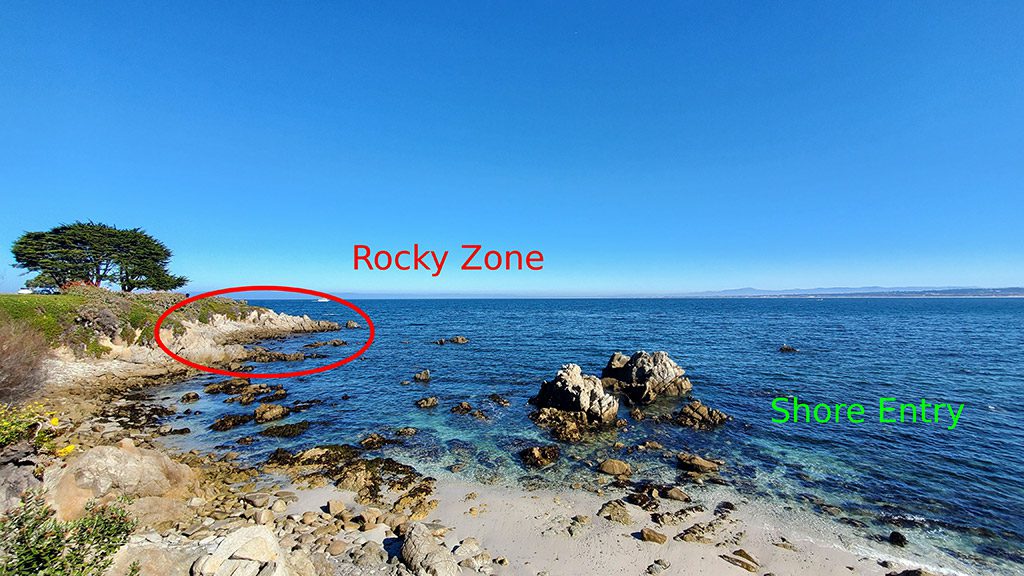
That being said, nothing bad happened. I didn’t hurt myself at all, my drysuit was still water-tight (don’t ask me how), and I didn’t lose any equipment. So, how exactly did I end up in this situation? Obviously, being “objective oriented” didn’t help and might have influenced my judgment of the weather conditions. One could argue that having a dive buddy would have been safer, but the reality is that it could very well have led to even more trouble. Any rescue attempt would have clearly put the two of us in danger, breaking the first rule of rescue: “Don’t put yourself at risk.” I undoubtedly didn’t know enough about the dive site and managed to get myself into a dangerous zone that I didn’t know existed. And, last but not least, I clearly had no appreciation for the conditions, and I underestimated how fast the conditions on the surface would change.
Though, aside from extraordinary luck, which I definitely had that day, I believe that this mindset of keeping mental control at all costs and attacking problems one by one really made the difference and allowed me to transform what could have been a tragedy into a learning moment and a fun story. Clearly, if there was one thing I did right that very day, it was that. And it once again highlighted the importance of not panicking and not abandoning hope. As long as you can fight, you haven’t lost.
Post Analysis
The problem with this type of incident is that, by essence, they are multi-factorials: 10% solo diving, 10% dark environment, 15% not wanting to miss my last dive, 30% poor knowledge of the dive site, and 35% poor assessment of the weather (if the percentages really mean anything, to be honest). It’s very hard to pinpoint exactly the cause of this series of events. And consequently, it’s hard to predict any corrective action. I can absolutely tell you that I drastically raised the bar for what I would consider “acceptable weather conditions;” though, one could argue that it’s an abstract concept. Exactly what are “acceptable weather conditions”? How do you even read a maritime weather report? As technically inclined divers, we tend to focus on technical skills and procedures, buoyancy control, streamlining, team efficiency, and navigation. Unfortunately, the decision as to whether the conditions are diveable or not often falls to the dive boat crew. And this tends to make many (most?) of us environmentally-risk-unaware.
At the end of the day, I changed my perspective. The question is not anymore: “Is this dive doable?” but rather, “Will this dive be enjoyable?” I’m not so much interested to know if the dive will be humanly possible if it means having to fight the surge and waves on the way in, on the way out, or even during the dive. Most of the time, conditions will be arguably acceptable, though it might not be a relaxing experience. And, I came to realize that I’m not so much interested in playing on the edge and trying to make it work at all costs. Some will quote a different sort of “rule of three.” If three or more unplanned things (e.g. regulator issue, or any problem really) occur at any time before the dive, call the dive even if you fix it. Which to me sounds a little like “diving astrology,” to be fair (and it’s not a compliment). Though if it makes divers feel better, I’m totally for it, as we often say, “You can never call the dive too early, only too late”.
When I started to share this story, many told me about similar stories of their own that led them to stop solo diving in the ocean (though they were sometimes more comfortable in caves as they consider the conditions to be more stable, which might not be true everywhere).
I will conclude this article by asking you whether you know about the environmental risks of your regular dive sites. What steps do you take to assess a new environment or new dive site? What could we change in dive training to make divers more “environmental-conditions-aware?” Maybe teaching students how to read a weather report or a wave model chart.
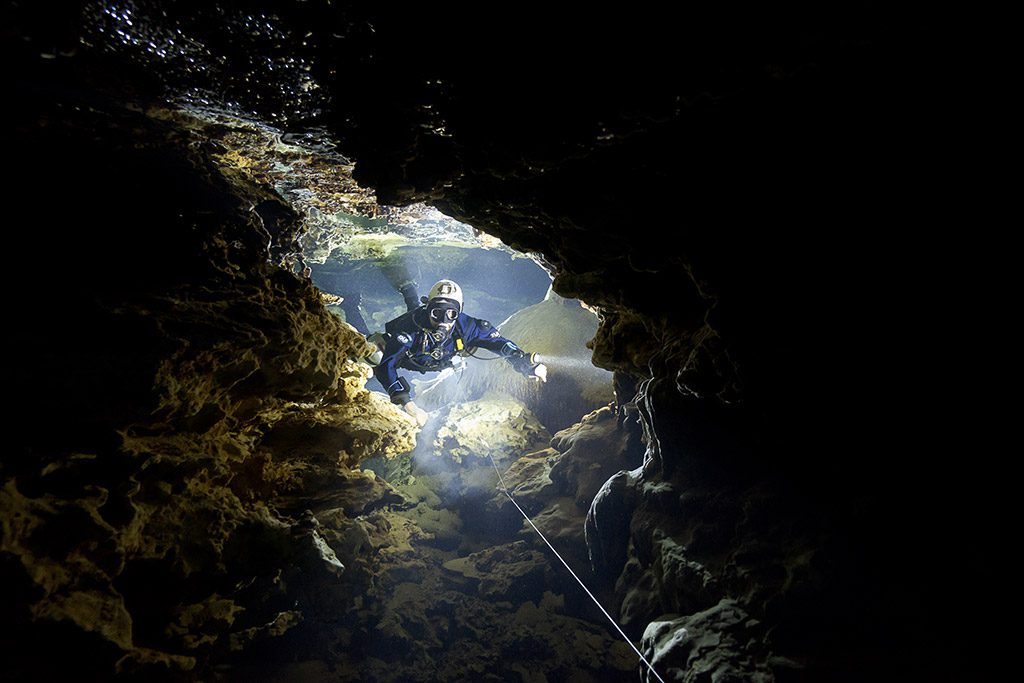
I hope this story will help you to better judge some situations you might encounter in your dive life. I hope this will also spark some discussions with your teammates and maybe lead you to check a weather report on the morning of each dive.
By all means, dive safely.
Dive Deeper:
InDEPTH: Close Calls: I Ripped My Drysuit a Kilometer Back In The Cave by Fan Ping
InDEPTH: Surviving an Uncontrolled Ascent by Maureen Roberts
InDEPTH: The Dumbest Thing I’ve Done Diving by Kyle Bourland
DIVE TALK: DIVERS REACT TO MR. BALLEN’S CLAUSTROPHOBIC HORROR STORY
Divesoft Talks: Close Calls and the important lessons learned
Order your copy of the book CLOSE CALLS by Strais Kas

Jonathan Dekhtiar is a 31-year-old Frenchman living in Miami, FL, an artificial intelligence engineer on the dry days, and an avid technical and cave diver on the weekends. Fascinated by the blue world since his teen years, he has lived in many countries to explore and discover the hidden gems under the water line. Instagram: @TheScubaPanda



















